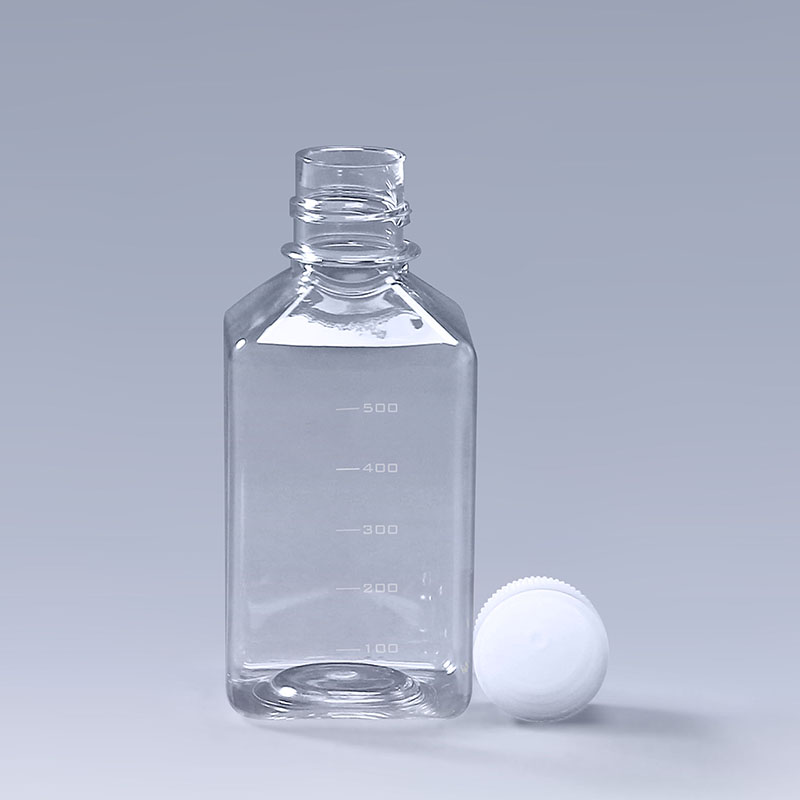When it comes to storing and sampling active pharmaceutical ingredients and bulk intermediates, the choice of media bottles is critical. The most popular choices are square media bottles made from PET (polyethylene terephthalate) and PETG (polyethylene terephthalate modified). While both materials have excellent gas barrier properties, they have different characteristics that make them suitable for different applications. In this blog, we will explore the differences between PET and PETG media bottles to help you make an informed decision based on your storage needs.
1. Material composition and properties
The main difference between PET and PETG media bottles is their chemical composition. PET is a thermoplastic polymer that is widely used in packaging due to its strength, lightweight, and recyclability. It has excellent clarity and impact resistance, making it a popular choice for a variety of applications. On the other hand, PETG is a modified version of PET that contains ethylene glycol in its formulation. This modification enhances its thermal stability and impact resistance, making PETG media bottles more durable and less shatterproof than PET media bottles.
PET Media Bottles:
· Strong and lightweight
· Excellent clarity
· Good impact resistance
· Recyclable
PETG culture medium bottle:
· Enhanced thermal stability
· Excellent impact resistance
· Less fragile than PET
· Suitable for high-temperature applications
2. Application and Applicability
Both PET and PETG media bottles are suitable for storing and sampling active pharmaceutical ingredients and bulk intermediates, but their specific applications may differ. PET media bottles are typically used in environments where temperatures do not exceed moderate levels, making them ideal for general storage purposes. However, when it comes to applications that require higher temperatures or contact with harsh chemicals, PETG media bottles are the preferred choice. They have enhanced durability and resistance to stress cracking, making them suitable for more demanding environments.
PET Media Bottles:
· Suitable for general storage
· Suitable for medium-temperature applications
· Commonly used in food and beverage packaging
PETG culture medium bottle:
· Suitable for high-temperature applications
· Resistant to corrosive chemicals
· Ideal for pharmaceutical and laboratory use
3. Environmental considerations
Both PET and PETG media bottles are recyclable, but their environmental impacts may differ. PET is one of the most recycled plastics in the world, with a well-established recycling infrastructure. For those looking to minimize their ecological footprint, PET media bottles are a more environmentally friendly option. While PETG is also recyclable, there may not be the same level of recycling facilities, which may limit its sustainability in certain areas. When choosing between the two, consider whether recycling options are available in your area.
The environmental impact of PET:
· Widely recycled
· Build recycling infrastructure
· Reduce ecological footprint
PETG’s impact on the environment:
· Recyclable but not very common
· Recycling facilities are limited in some areas
· May have greater environmental impacts in some areas
4. Conclusion: Make the right choice
In summary, square media bottles made from both PET and PETG offer excellent gas barrier properties for the storage and sampling of active pharmaceutical ingredients and bulk intermediates. However, the choice between the two ultimately depends on your specific needs. If you need a lightweight, recyclable option for general storage, PET media bottles may be your best choice. Conversely, if you need a more durable solution for high-temperature or chemically demanding applications, PETG media bottles are a better choice. By understanding the differences between these two materials, you can choose the right media bottle for your storage needs.
The FAI climbed 5.9 percent year-on-year in the first 11 months of 2018, quickening from the 5.7-percent growth in Jan-Oct, the National Bureau of Statistics (NBS) said Friday in an online statement.
The key indicator of investment, dubbed a major growth driver, hit the bottom in August and has since started to rebound steadily.
In the face of emerging economic challenges home and abroad, China has stepped up efforts to stabilize investment, in particular rolling out measures to motivate private investors and channel funds into infrastructure.
Friday's data showed private investment, accounting for more than 60 percent of the total FAI, expanded by a brisk 8.7 percent.
NBS spokesperson Mao Shengyong said funds into weak economic links registered rapid increases as investment in environmental protection and agriculture jumped 42 percent and 12.5 percent respectively, much faster than the average.
In breakdown, investment in high-tech and equipment manufacturing remained vigorous with 16.1-percent and 11.6-percent increases respectively in the first 11 months. Infrastructure investment gained 3.7 percent, staying flat. Investment in property development rose 9.7 percent, also unchanged.
 English
English



















































